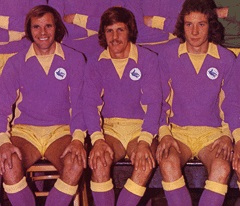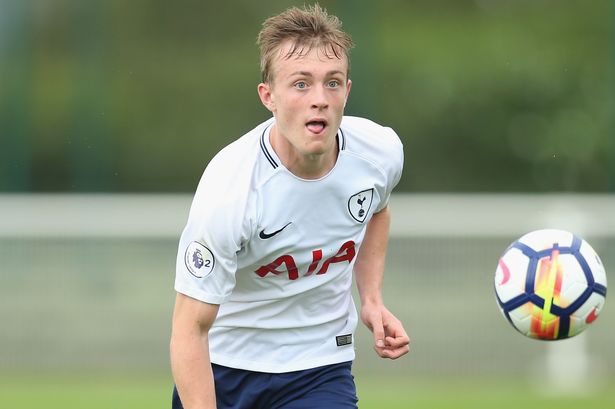
Another opponent for whom the “six decades” title isn’t quite accurate, but I’ve put together questions going back to the 60s with a Spurs, and, in most cases, Cardiff flavour – I’ll put the answers on here tomorrow.
60s. Although it may sound like this, one of the teams this member of a Spurs side beaten at Ninian Park during this decade later went on to play for and manage was not named after a member of our playing staff at the time of their defeat – name the two players I’m talking about here.
70s. Born in a place meaning “old wood” in English, he was playing as an amateur at a location which becomes a focal point for many sport lovers in March every year when City spotted him and brought him here for a small fee. His stay at Cardiff lasted about four years and it could be argued that the biggest game he featured in for us during that time was against Spurs. His spell at Cardiff ended, allegedly for disciplinary reasons, and he moved on to perform at a location on Cromwell Road. His next, and final, stop was at a place where, apparently, some expected to be able to see one of the Seven Wonders of the World and herds of wildebeest, but who am I describing?
80s. The scorer of an own goal on his debut, the man pictured started off a long career in the game, which is still going on, with Spurs towards the end of this decade, but had to move on from White Hart Lane to become an established first teamer. Apart from three games on loan at Oxford, all of his Football League appearances after leaving Spurs came for four clubs within a 100 miles of Tottenham that all had blue in their shirts. In all, he made over five hundred and fifty Football League appearances over a twenty year period and, since then, apart from a very brief spell with a former club in Sussex, has spent all of his time working in the non league game – can you name him?
90s. Can you identify this player from these clues?
Signed for a club from his homeland with the word Stella in it’s name, this defender moved to Spurs at fifteen and was playing first team football within a couple of years. It took him a while to establish himself in the side, but a memorable goal against Manchester United helped him along the way and by the end of this decade, he was rated one of the best around in his best position. Unfortunately, the injuries which dogged him for the rest of his career took a hold and after a couple of seasons where he was mostly absent, he left the club to sign for alleged avian thieves. More injuries led him to announce his retirement four years later, but he was persuaded back by a team supported by people with an odd coloured facial protuberance and captained them to a Cup triumph before retiring for good this time shortly after we had become a Premier League club for the first time.
00s. He played for us against Spurs in this decade, but can you identify him from this list of some of the clubs he has played for since leaving us?
Southend, Peterborough, Portland Timbers, Yeovil and Shamrock Rovers – a relative of his is currently on the books of a London based Championship club.
10s. Name this membet of a Spurs squad to have faced us during this decade.
Answers.
60s. Peter Baker played at right back for the Spurs side beaten 3-2 by City in March 1961. He went on to play for and manage South African club Durban United in two separate spells with that club – although he was not involved in the game in question, Alan Durban was a member of City’s playing staff in 1961.
70s. Ray Bishop was born in Hengoed and played for Cheltenham Town before signing for us in 1977 – he came on as a sub in the home 0-0 draw with Spurs in September 1977 and then started in the return game, which we lost 2-1, four months later. His next club was Newport County (whose old Somerton Park ground was on Cromwell Road), before ending his career at Torquay where, according to Basil Fawlty, a guest at his awful hotel had expected to see Sydney Opera House, the Hanging Gardens of Babylon and ”Herds of wildebeest sweeping majestically………” from her room window.
80s. Defender Guy Butters put through his own net when making his debut for Spurs in a League Cup tie with Blackburn in1988. After playing on loan at Southend, he moved on to Portsmouth in 1996 and played over a hundred times for them, before making a total of over three more hundred appearances for Gillingham and Brighton – he went into playing, managing and coaching in the non league scene in 2008 after his release by Brighton.
90s. Stephen Carr was signed by Spurs from Dublin team Stella Maris and moved on to Newcastle after more than a decade at White Hart Lane – he then finished his career at Birmingham, captaining them to a League Cup win in 2011.
00s. Kerrea Gilbert played in both of our FA Cup games with Spurs in 2006/07 – QPR mIdfielder Jordan Cousins is, appropriately enough, his cousin.
10s. Eighteen year old Oliver Skipp was an unused sub for Spurs in their 1-0 win over us at Wembley in October.




